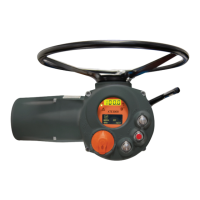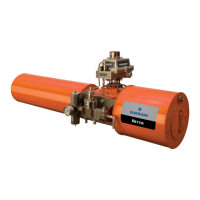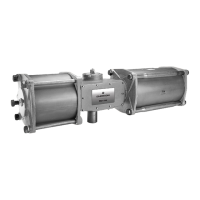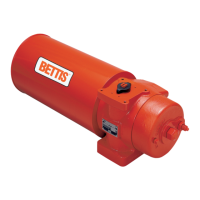October 2019
Installation, Operation and Maintenance Manual
MAN-02-04-97-0713-EN Rev. 1
32
Operating the XTE3000
Section 5: Operating the XTE3000
5.6.2 Output Contacts
Standard version
• Monitor relay: the voltage-free, change-over contacts of the monitor relay are
available on the terminal board. The monitor relay indicates if the actuator can
be remotely controlled or if there is a problem or condition that prevents remote
control of the valve. The conditions that cause the relay to switch over are listed in
Section 9.1.6, Output Relays.
• AS1,2,3,4,5,6,7 relays: the voltage-free contacts of 7 latching relays are available
on the terminal board. The status (make or break) and the conditions that cause
switching of a given relay can be viewed and congured by using the “VIEW and
SET-UP” features. The status of the latching relays is immediately updated if the
associated conditions for change occur, or are cyclically updated (every second).
• AS8 relay: a further voltage-free, change-over contact is available on the terminal
board. The conditions that cause the switching of the relay can be viewed and
congured by using the “VIEW and SET-UP” features.
• Contact rating:
Max. voltage 250 V AC / 30 V DC: max. current 5 A.
Min. voltage 5 V DC: min. current 5 mA.
5.6.3 ESD Operation
An ESD (Emergency Shut Down) signal can be sent to the actuator to override any existing
command and to drive the valve to a predetermined position.
The control is not self-maintained; that is, the ESD action continues until the relevant signal
is present. The “VIEW and SET-UP” features can congure the polarity of the ESD signal,
the valve position after the ESD action, and the priority of the ESD function, as described in
Section 9.1.3, ESD Control.
The ESD command is optically-isolated (opto-coupled). The circuits associated with the input
can be supplied by the internally generated 24 V DC or by an external 20-125 V DC or 20-120
V AC (50/60 Hz).
The signal levels are the following:
• Minimum ON signal > 20 V DC or 20 V AC (50/60 Hz).
• Maximum ON signal < 125 V DC or 120 V AC (50/60 Hz).
• Maximum OFF signal < 3 V.
• Current drawn from ESD controls < 15 mA.
WARNING
Any certication relating to actuator operation in hazardous areas will be invalidated if the
client desires that the motor thermostat be bypassed during ESD operation.

